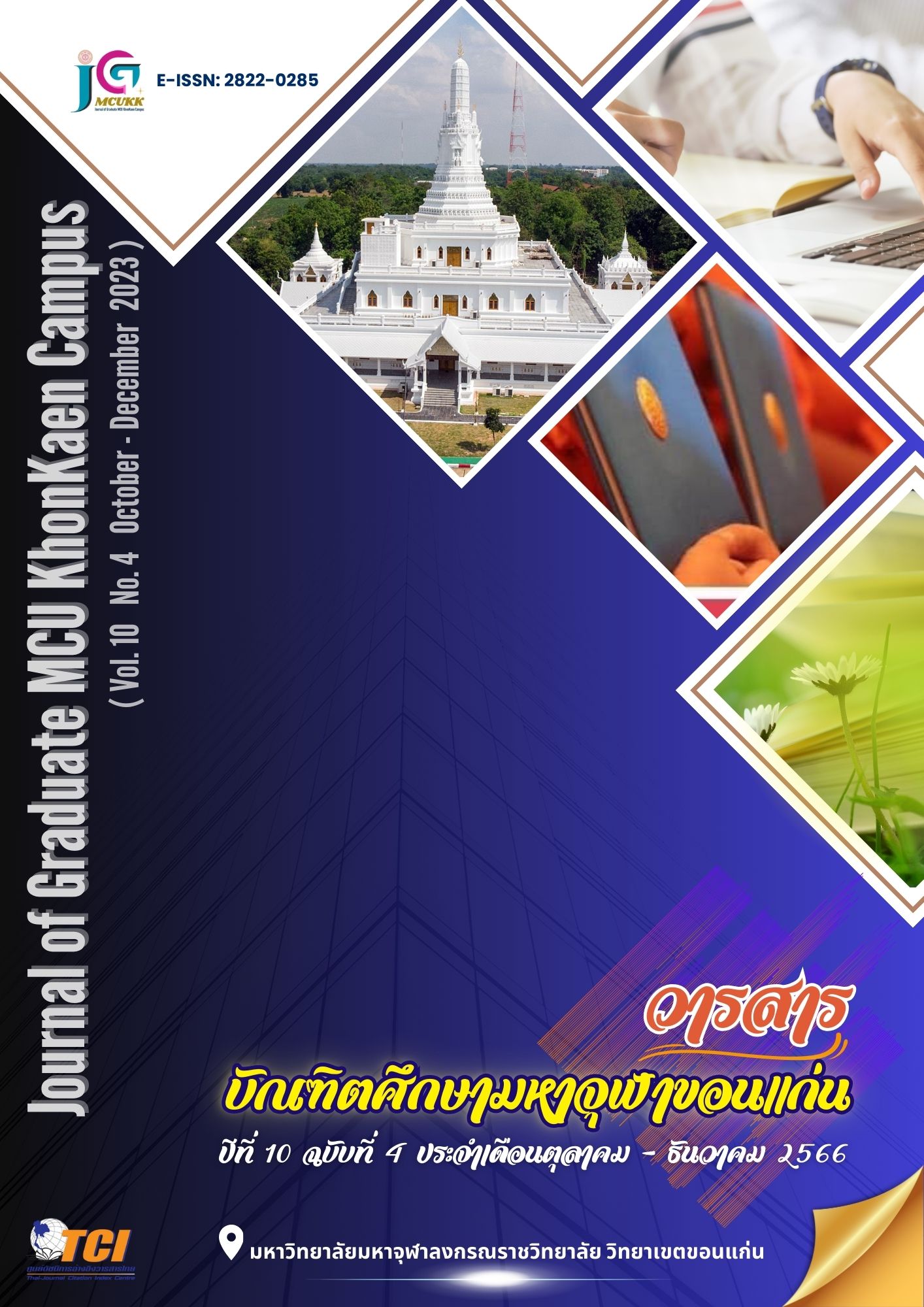Participation of community leaders in drug prevention and solution at Kalasin Municipality of Kalasin Province
Main Article Content
Abstract
The objectives of this research were as follows: 1) to study the level of participation of community leaders in preventing and solving drug problems in Kalasin municipality; 2) to compare the participation of community leaders in preventing and solving drug problems in Kalasin municipality and 3) to apply the Four Iddhipada principle with the participation of community leaders in preventing and solving drug problems in Kalasin municipality, Kalasin Province. The sample group included 396 community leaders in Kalasin municipality and 12 key informants. The research tools were a questionnaire and an interview form. The obtained data were analyzed using social science software packages and contextual content analysis.
The research results were as follows:
1) The levels of participation of community leaders in preventing and solving drug problems in Kalasin municipality from both overall and aspect perspectives were statistically rated at a high level.
2) The comparison of the level of behavioral participation of community leaders in the prevention and solution of drug problems in Kalasin municipality found that the samples with differences in age, education level, occupation, and average monthly income overall participate in the prevention and solution of drug problems in Kalasin Municipality differently with a statistical significance level of 0.05. The samples with different genders indifferently participate in the prevention and solution of drug problems in Kalasin Municipality.
3) The Result apply the Four Iddhipada principle with the participation of community leaders in preventing and solving drug problems in Kalasin municipality
(1) Chanda: a decision to create job satisfaction and wish to do more; (2) Viriya: diligence, perseverance, implementation of the plan; (3) Citta: cause-finding, willingness to fight without giving up on problems or obstacles; (4) Vimamsa: assessment, knowing how to use wisdom, use thoughtful consideration in all aspects of work to achieve the goal.
Article Details

This work is licensed under a Creative Commons Attribution-NonCommercial-NoDerivatives 4.0 International License.
References
มูลนิธิชัยพัฒนา. (2550). จุดเริ่มต้นแนวคิดเศรษฐกิจพอเพียง. สืบค้นวันท่ี 1 พฤศจิกายน 2558, จาก http://www.chaipat.or.th/
ศูนย์ประสานการปฏิบัติที่ 1 กองอำนวยการรักษาความมั่นคงภายในราชอาณาจักร. ยุทธศาสตร์การแก้ไขปัญหายาเสพติดตามนโยบายรัฐบาล (ยุทธศาสตร์ 5 รั้วป้องกัน). กรุงเทพน: สำนักงาน ป.ป.ส. กระทรวงยุติธรรม. (2555).
สำนักงานคณะกรรมการป้องกันปราบปรามยาเสพติด. (2549). รายงานการวิจัยเรื่อง การมีส่วนร่วมของชุมชนและองค์กรปกครองส่วนท้องถิ่นในการป้องกันและแก้ไขปัญหายาเสพติดอย่างยั่งยืน. นนทบุรี: สำนักงานกิจการยุติธรรม.
ชุมไชศักดิ์ อัครธนอนันต์, “การมีส่วนร่วมของผู้นำชุมชนต่อมาตรการแก้ไขปัญหายาเสพติด เขตพื้นที่บางกอกใหญ่ กรุงเทพมหานคร” (๒๕๕๔ : บทคัดย่อ)
กานต์ ล้วนแก้ว. การมีส่วนร่วมของสมาชิกในการป้องกันยาเสพติดในชุมชน (รายงานผลการวิจัย). กรุงเทพฯ: มหาวิทยาลัยเกษตรศาสตร์. (2552).
มะพาริ กะมูนิง มารุยูกี รานิง ตายูดนิ อุสมาน. บทบาทของผู้นำชุมชนในการมีส่วนร่วมแก้ไขปัญหายาเสพติดของ (มหาวิทยาลัยราชภัฏยะลา. ๒๕๕๖)
ดาบตำรวจนิวาส วิรัช. การมีส่วนร่วมของประชาชนในการป้องกันแก้ไขปัญหายาเสพติดในพื้นที่ตำบลบ้านกลาง ของสถานีตำรวจภูธรเมืองลำพูน วิทยานิพนธ์หลักสูตร พุทธศาสตรมหาบัณฑิต มหาวิทยาลัยมหาจุฬาลงกรณราชวิทยาลัย (๒๕๕๗)
เสนีย์ วัยวัฒนะ. การมีส่วนร่วมในการป้องกันและแก้ไขปัญหายาเสพติดภายในชุมชน กรณี ชุมชนพัฒนาล็อค 4-5-6 แขวงคลองเตย เขตคลองเตยกรุงเทพฯ (๒๕๕๒)

